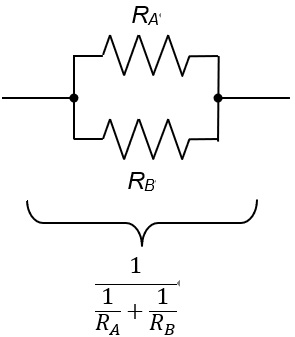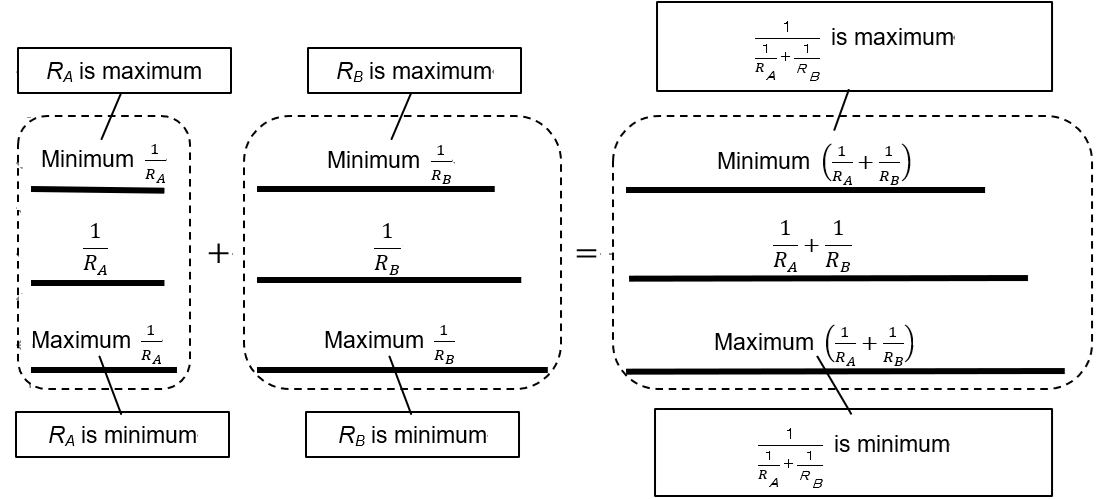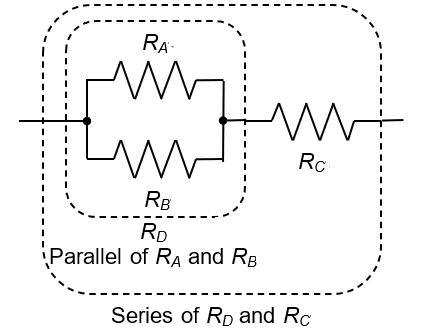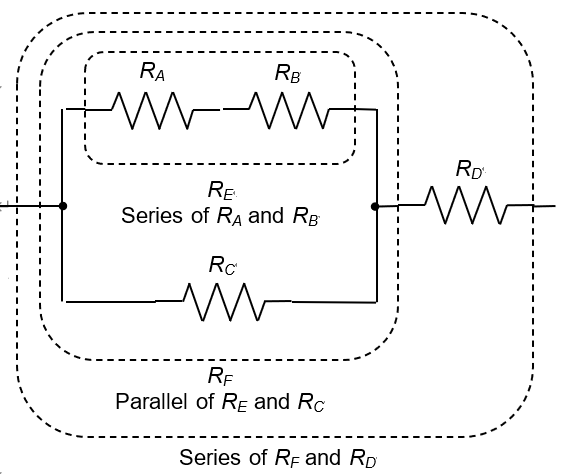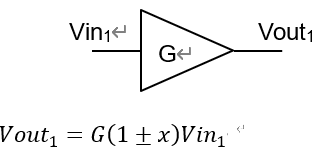編集部
English version Toragi Junior Test (15) [Correct answer and explanation] Tolerance of a circuit that combines multiple resistors …… 英語版【トラ技ジュニア検定⑮】「複数の抵抗を組み合わせた回路の許容差」
![English version Toragi Junior Test (15) [Correct answer and explanation] Tolerance of a circuit that combines multiple resistors …… 英語版【トラ技ジュニア検定⑮】「複数の抵抗を組み合わせた回路の許容差」](https://toragijr.cqpub.co.jp/wp-content/uploads/article/kentei/icatch_360x238_kentei2-1.gif)
ToraGi Junior No.59 (Autumn 2024) p.37
“ToraGi Junior Test (15)” “Tolerance of a circuit combining multiple resistors” is posted.
Please check the journal for the question text and figures.
<Hitoshi Miyazaki>
トラ技ジュニア No.59(2024秋号)p.37掲載
英語版【トラ技ジュニア検定⑮】「複数の抵抗を組み合わせた回路の許容差」の解答と解説を掲載します. 日本語版はコチラ
問題文および図については,誌面にてご確認ください. <宮崎 仁>
[Correct answer]
(b)
[Explanation]
This question is about the accuracy (tolerance) of a single resistor or a circuit made by combining several resistors.
●Consider the tolerance of series connection
As explained in the body of the question, when resistors with the same tolerance are connected in series, the tolerance of the combined resistance is the same as that of the original resistance. For example, when a resistor A with ±10% tolerance and nominal value of RA and a resistor B with ±10% tolerance and nominal value of RB are connected in series, the nominal value of the combined resistance is RA+RB and the tolerance is ±10%.
Let us consider this as shown in Figure 1.
Though the values of resistors A and B vary within their tolerances, the combined resistance is the sum of those values, so that A+B is also minimum when A is minimum and B is minimum. Similarly, A+B will be maximum when A is maximum and B is maximum.
Figure 1 Tolerance for series connection
Considering the formula, when the tolerance is ±10%, the minimum R is 0.9 times the nominal R, and the maximum R is 1.1 times the nominal R. Therefore, the following formula is used to calculate the minimum R and the maximum R.
When RA and RB are minimum:
When RA and RB are maximum:
Then the minimum value of combined resistance is (RA+RB ) ×0.9 and the maximum value is (RA+RB ) × 1.1. That is, the minimum value is 0.9 times the nominal value of RA+RB and the maximum value is 1.1 times the nominal value of RA+RB. Therefore, the tolerance of the combined resistance is ±10%.
The above results in the following
(1) When a resistor with ±10% tolerance is connected in series, the total tolerance is also ±10%.
●Consider the tolerance of parallel connection
In the case of parallel connection, the combined resistance is in the form of a fraction, ![]() , as shown in Figure 2.
, as shown in Figure 2.
It’s hard to understand as it is, so let’s first think about ![]() on the denominator side.
on the denominator side.
Figure 2 Combined resistance of parallel connection
As shown in Figure 3, ![]() is minimum when
is minimum when ![]() and
and ![]() are both minimum, and
are both minimum, and ![]() is maximum when
is maximum when ![]() and
and ![]() are both maximum.
are both maximum.
Figure 3 Tolerance for parallel connection
If we note that ![]() is minimum when R is maximum and the inverse
is minimum when R is maximum and the inverse ![]() is maximum when R is minimum, we can say that,
is maximum when R is minimum, we can say that, ![]() is maximum when RA and RB are both minimum and
is maximum when RA and RB are both minimum and ![]() is minimum when RA and RB are both maximum.
is minimum when RA and RB are both maximum.
Furthermore, since the combined resistance of the parallel connection is ![]() , which is the reciprocal of
, which is the reciprocal of ![]() , we can say the following.
, we can say the following.
(2) When RA and RB are both minimum, parallel connection ![]() is minimum.
is minimum.
(3) When RA and RB are both maximum, parallel connection ![]() is maximum.
is maximum.
Next, let’s consider the calculation formula.
When RA and RB are minimum:
When RA and RB are maximum:
Therefore, it can be seen that the minimum value of the combined resistance of parallel connection is 0.9 times the nominal value, and the maximum value of the combined resistance of parallel connection is 1.1 times the nominal value. As in the case of series connection, we can say the following.
(4) If resistors with a tolerance of ±10% are connected in parallel, the overall tolerance will also be ±10%.
●Considering option A
Here, we will consider option A of the question statement.
Option A says, “If two resistors with a tolerance of ±5% are connected in parallel, the combined resistance will be maximum when both are at nominal value -5%, and the combined resistance will be the minimum.when both are at nominal value +5%. “
When the tolerance is ±5% and the two resistors are both at nominal value -5%, so from (2) the combined resistance will be the minimum. Therefore, the statement “The combined resistance will be maximum when both the nominal value -5%” is incorrect.
When the tolerance is ±5% and the two resistors are both at nominal value +5%, so from (3) the combined resistance will be the maximum. Therefore, the statement “The combined resistance will be minimum when both the nominal value +5%” is incorrect.
Therefore, option A of the question statement is incorrect.
●Considering option B
Here, we will consider option B of the question statement.
Option B says, “If you create a circuit by connecting multiple resistors with a tolerance of ±5% in series or in parallel, the error in the combined resistance of that circuit will fall within the range of ±5%.”
Both (1) and (4) above are explained using the case of a tolerance of ±10% as an example, but they generally also hold true when the tolerance is ±x%. Therefore, whether two resistors with a tolerance of ±5% are connected in series or two resistors with a tolerance of ±5% are connected in parallel, the error in the combined resistance will be within ±5%.
Furthermore, let’s consider a complex connection using three or more resistors.
For example, the circuit in Figure 4 that connects three resistors RA, RB and RC can be thought of as first connecting RA and RB in parallel to form RD, and then connecting RC in series. Similarly, the circuit in Figure 5, which connects four resistors RA, RB, RC and RD, first connects RA and RB in series to form RE, then connects RC in parallel to form RF, and then connects RD in series.
Many circuits made by combining multiple resistors can be broken down into combinations of series connections and parallel connections like this. Since the original tolerance is maintained for each series connection and parallel connection, the original tolerance is also maintained for the whole of such a circuit. For example, a circuit made by connecting multiple resistors with a tolerance of ±5% in series or in parallel has a tolerance of ±5% as a whole, and the error of the combined resistance falls within the range of ±5%.
Therefore, option B of the question statement is correct.
Figure 4 Example of series-parallel connection of 3 resistor
Figure 5 Example of series-parallel connection of 4 resistors
Note that some circuits that use multiple resistors cannot be broken down into combinations of series connections and parallel connections. Even in that case, if the tolerance of each resistor is the same, the tolerance of the entire circuit can be considered to be the same as the tolerance of each resistor.
●When errors are accumulated, and when they are not
It is often said that “errors accumulate in analog circuits.” This refers to the fact that, for example, when audio is repeatedly recorded and played back on an analog tape recorder, the signal deteriorates each time it is copied.
As an example of a circuit, consider the case where an analog amplifier circuit with a gain error x as shown in Figure 6 is connected in series with N stages as shown in Figure 7. Here, we will consider the case where all errors in each stage are –x as the worst case, but it is the same even if all errors in each stage are +x.
Figure 6 Amplifier circuit with gain error
Figure 7 Example of series connection of amplifier circuits with gain error
If the gain of the first stage is ![]() and the gain of the second stage is also
and the gain of the second stage is also ![]() , the combined gain of the first and second stages is
, the combined gain of the first and second stages is ![]() . Here, since x is an error, it is considered to be much smaller than 1 (for example, 0.1 or 0.01), so the term
. Here, since x is an error, it is considered to be much smaller than 1 (for example, 0.1 or 0.01), so the term ![]() is extremely small compared to
is extremely small compared to ![]() .
.
Therefore, the combined gain of the first and second stages can be said to be approximately ![]() .
.
Similarly, the combined gain from the 1st stage to the 3rd stage is approximately ![]() , and the combined gain from the 1st stage to the 4th stage is approximately
, and the combined gain from the 1st stage to the 4th stage is approximately ![]() . You can see that the error x accumulates as it increases.
. You can see that the error x accumulates as it increases.
”Errors accumulate in analog circuits” refers to this situation.
In contrast, series-parallel connection of resistors does not accumulate errors. For example, if you connect resistors in series with a nominal value of 1kΩ and an error of +50Ω (+5% for 1kΩ) as shown in Figure 8, the errors will add up to +100Ω, but the nominal value will also be added. Since they add up to 2kΩ, the ratio between the nominal value and the error remains unchanged.
Figure 8 In series connection, both nominal value and error are added
●Considering option C
Here, we will consider option C of the question statement.
Option C says, “If you connect a number of resistors with a nominal value of 1kΩ and a tolerance of ±5% in series, the error in the combined resistance will become larger than ±5% due to the accumulation of errors. “
As we have seen so far, when resistors with the same tolerance are connected in series, the tolerance of the combined resistor is the same as the tolerance of the original resistor. If N resistors of 1kΩ, ±5% are connected in series, the nominal value of the combined resistance will be NkΩ, and the tolerance will remain ±5%.
Therefore, option C in the question statement is incorrect.
●Consider value variations and tolerances
As explained in the body of the question, the actual resistance value of the resistor has some error, and it is not exactly the nominal value, but has variations. The range of variation from the minimum to the maximum is the tolerance. Therefore, for example, if a resistor has a nominal value of 1kΩ and a tolerance of ±1%, the actual resistance value could be any value between 990Ω (1kΩ-1%) and 1010Ω (1kΩ+1%).
This variation results from physical variations during the resistor manufacturing process. Generally, as shown in Figure 9, the frequency is higher near the center of the range, and the frequency is lower near ends of the range. Among these distributions, the most well-known form is the normal distribution. Although actual resistors do not have a normal distribution, they are expected to have a similar distribution.
Figure 9 Example of resistance value distribution of an actual resistor
Here, when comparing the distributions of tolerance ±1% and tolerance ±5%, it can be seen that ±1% is often closer to the nominal value, and ±5% is often farther from the nominal value. However, there are values that are extremely close to the nominal value even at ±5%, and there are values that are far from the nominal value at ±1%. In other words, a ±1% resistor is not always closer to its nominal value than a ±5% resistor.
●Considering option D
Here, we will consider option D of the question statement.
Option D says, “If you compare the actual values of a resistance with a nominal value of 1 kΩ and a tolerance of ±1% and a resistance with a tolerance of ±5%, the ±1% resistance is always closer to 1 kΩ. “
As explained above, there are resistors with a ±5% value that are extremely close to 1kΩ, and there are resistors with a ±1% value that are further away from 1kΩ. A ±1% resistor is not always closer to 1kΩ.
Therefore, option D in the question statement is incorrect.
To summarize the above, among the options, A, C, and D are incorrect, and B is the correct. The correct answer to this question is B














